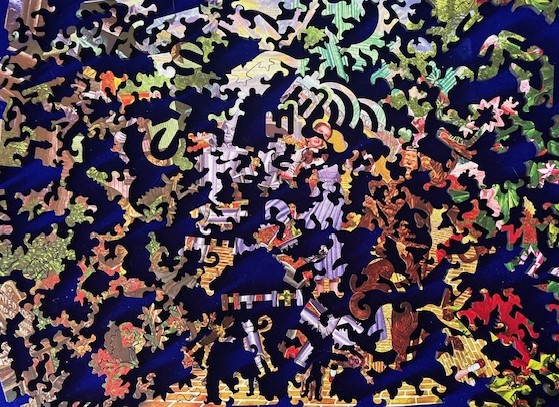
Shattering of Wilhelm Reich
For Wilhelm Reich, the challenges would be even greater. He had moved early in his career to modes of therapy that were quite controversial and have remained controversial today. Furthermore, his political allegiances and personal life crises led him down a path of self-destruction. It is a real-life path that parallels in many respects the hypothetical path that we have outlined for the Tin Man and his companions. Like the Tin Man, the life of Wilhelm Reich was shattered. He was left a broken man when he died in 1957.
 The Wilhelm Reich that we brought into the drama of Tin Man treatment was a successful and influential psychoanalyst who at one time was even considered by Sigmund Freud to be the heir apparent to Freud himself as leader of the psychoanalytic movement. But then the dynamic reality of the 20th Century impinged on Reich and he eventually became a shattered man who died in a prison (or asylum) in a hostile American society.
The Wilhelm Reich that we brought into the drama of Tin Man treatment was a successful and influential psychoanalyst who at one time was even considered by Sigmund Freud to be the heir apparent to Freud himself as leader of the psychoanalytic movement. But then the dynamic reality of the 20th Century impinged on Reich and he eventually became a shattered man who died in a prison (or asylum) in a hostile American society.
It all began when Reich was in a world as wonderful as Oz. He met Sigmund Freud in 1919, became the director of training at the Psychoanalytic Institute in Vienna in 1924 and was considered by Freud at one time to be the prospective head of the psychoanalytic movement after his death. It was at this time that Reich wrote Character Armor (in German)—the perspective he was to take alongside that of Moise Feldenkrais when working with our Tin Man. His work influences the perspectives and practices of other therapists (such as Fritz Perls, Alexander Lowen and Arthur Janov, who were to become quite popular, though (like Reich) controversial in the psychotherapeutic practices of the late 20th Century.
Reich was to become one of Vandehei’s liberal warriors – or was he soon to become a Musk-eteer. He began taking a yellow brick road that led away from Freud’s Vienna and toward the Soviet Union and later Norway, the United States and a federal prison—yielding a strange fellowship in both the world of liberal warrior and world of huckstering Musk-eteer. The orientation toward Freud’s psychoanalysis was coupled in the mind and heart of Wilhelm Reich with support for the doctrines of Marx’s communism– and later with enthrallment in the machinery of organic energy.
Like many of Freud’s other early followers, Reich wished to couple Freud and Marx, as the two great revolutionary thinkers of the late 19th and early 20th Century. We see this coupling most successfully engaged in the work of the Frankfort school and most popularly presented in the writings of Erich Fromm. While Freud himself was never attracted to communism, he was eager to expand his theory to encompass all of civilization (rather than just psychotherapeutic treatment) (Jacoby, 1983). Furthermore, Freud was open to accepting all comers (including those who saw Freud as a “liberator” of feminine sexuality and as well as an appropriate companion to the liberation of oppressed people).





